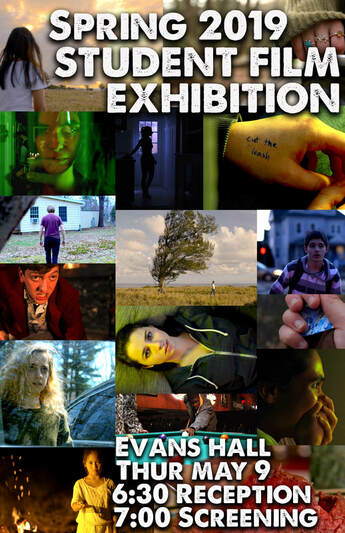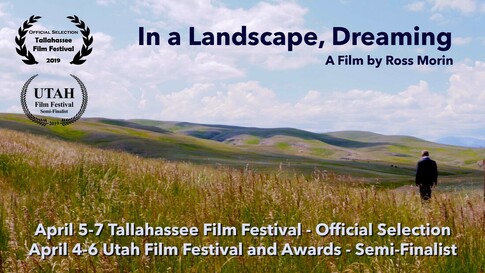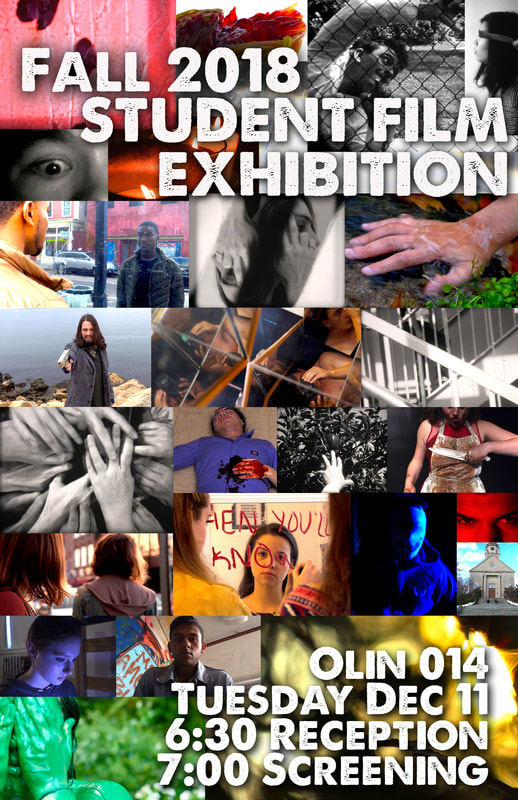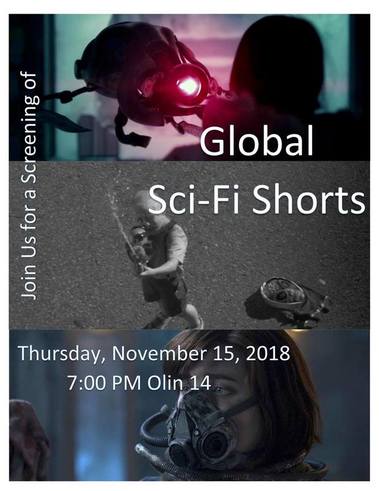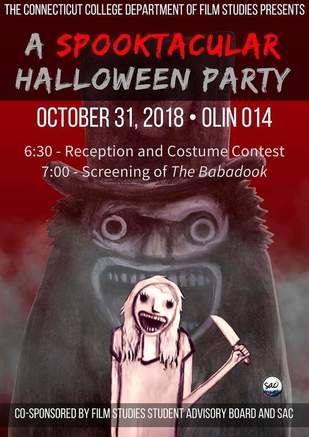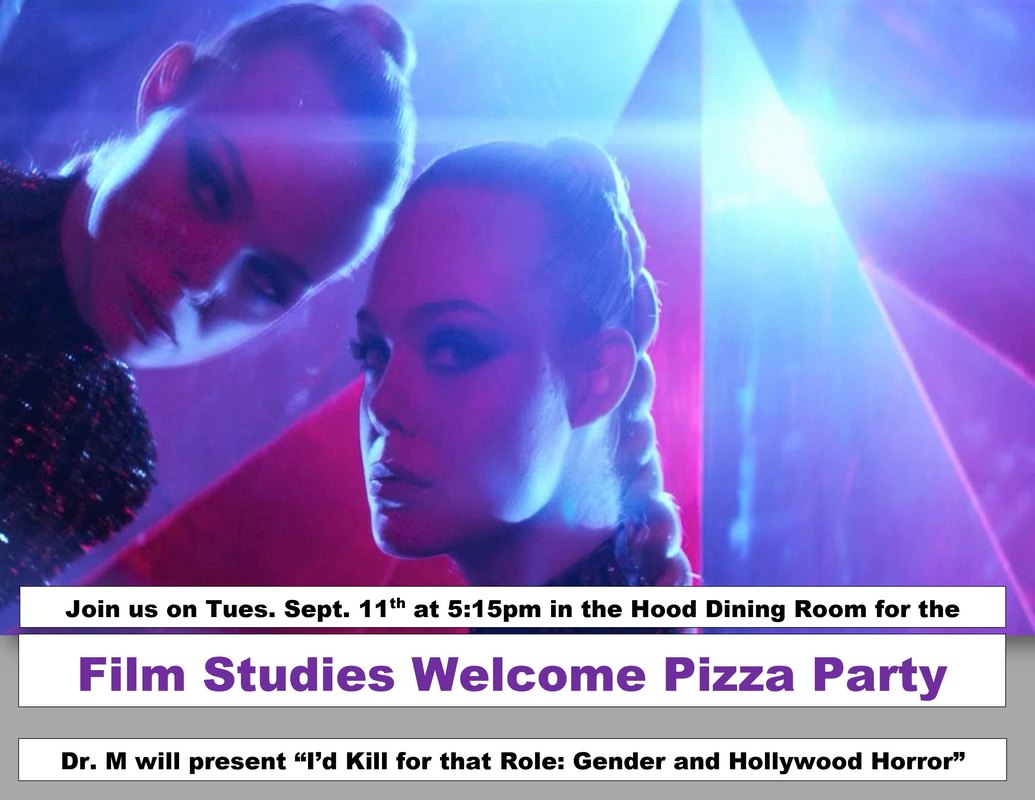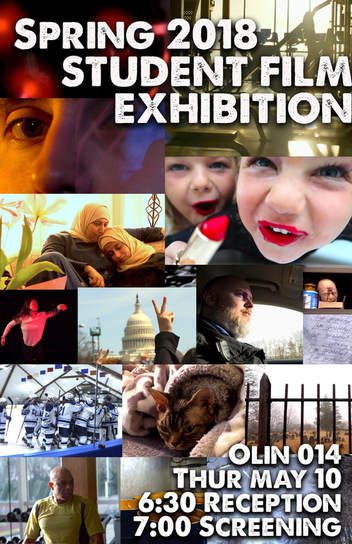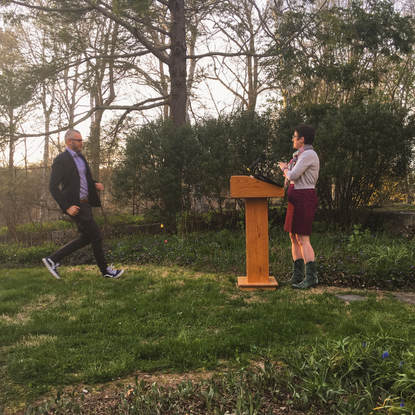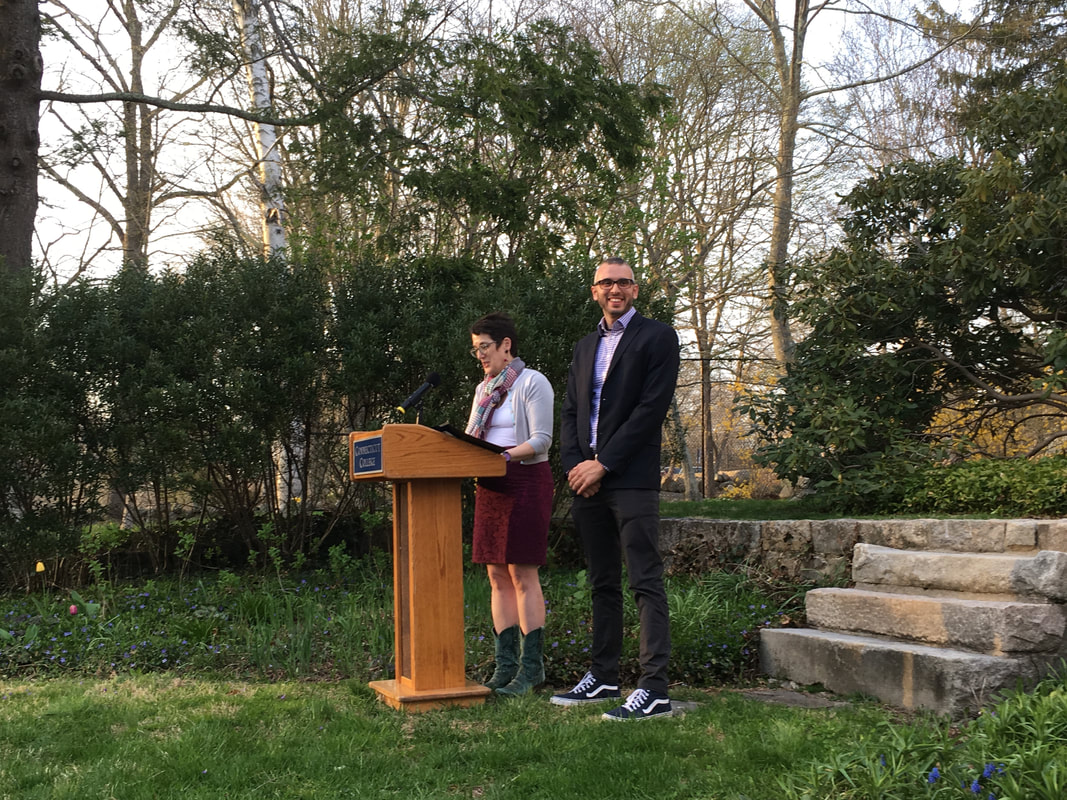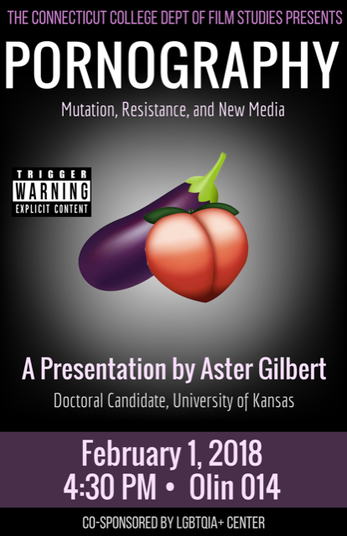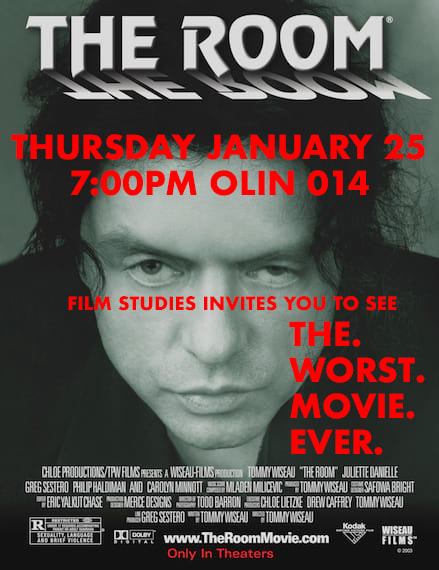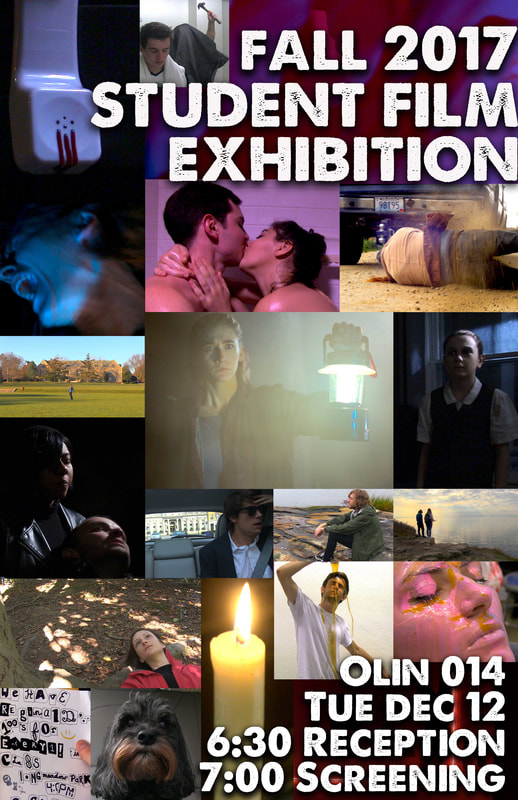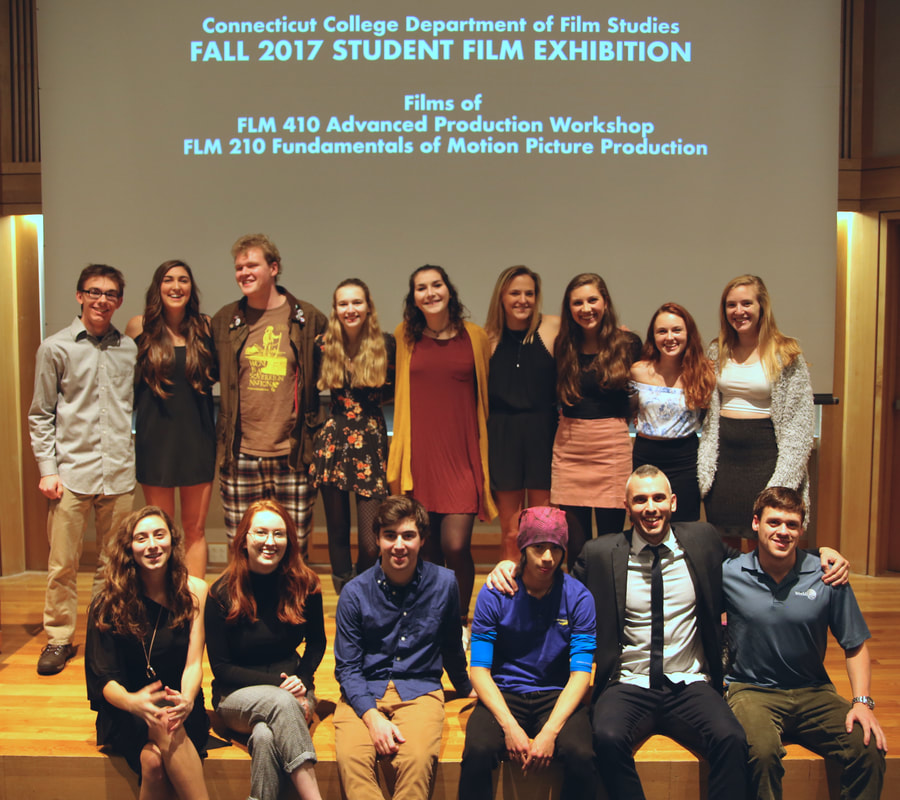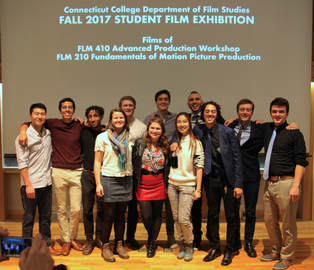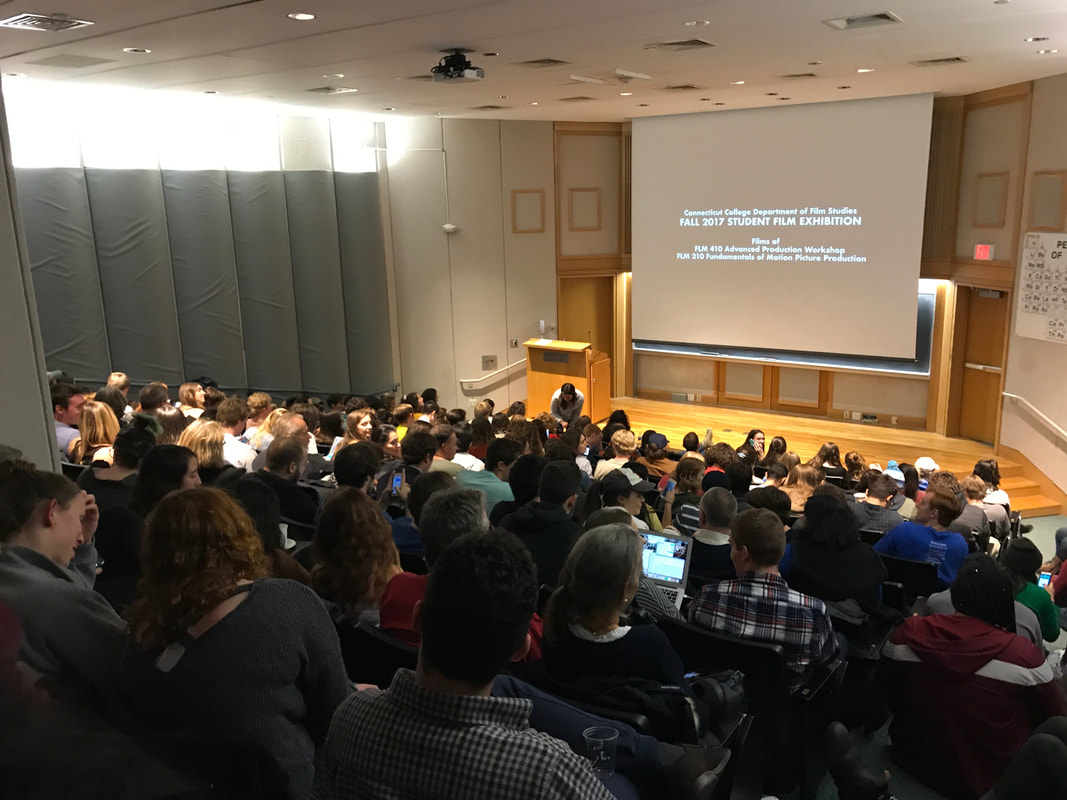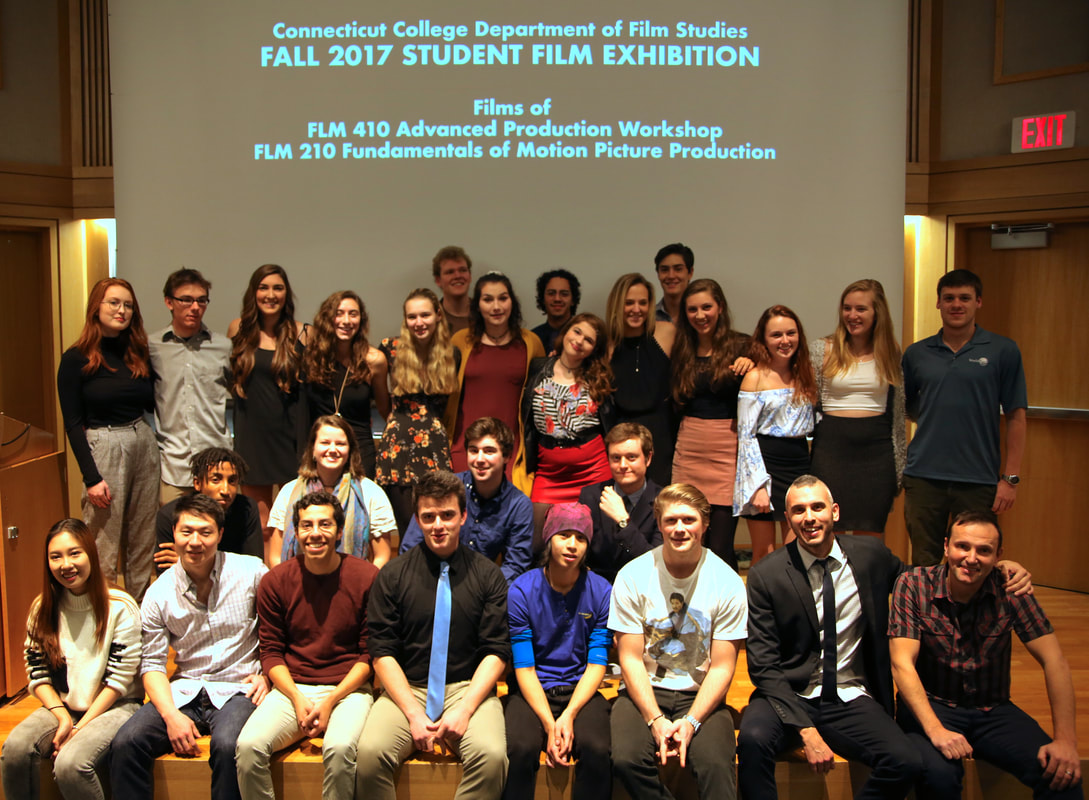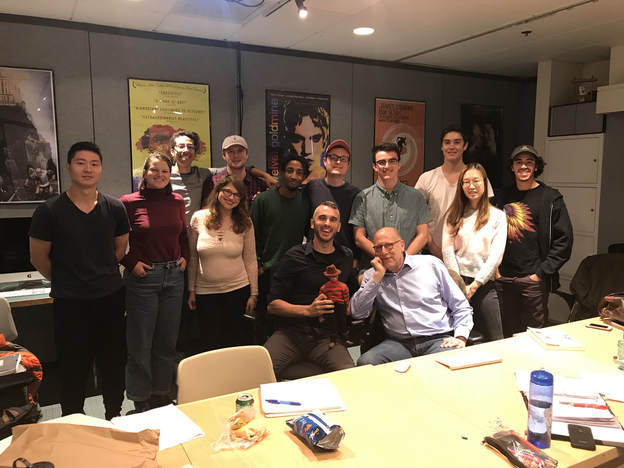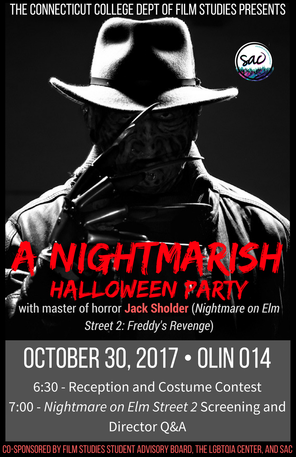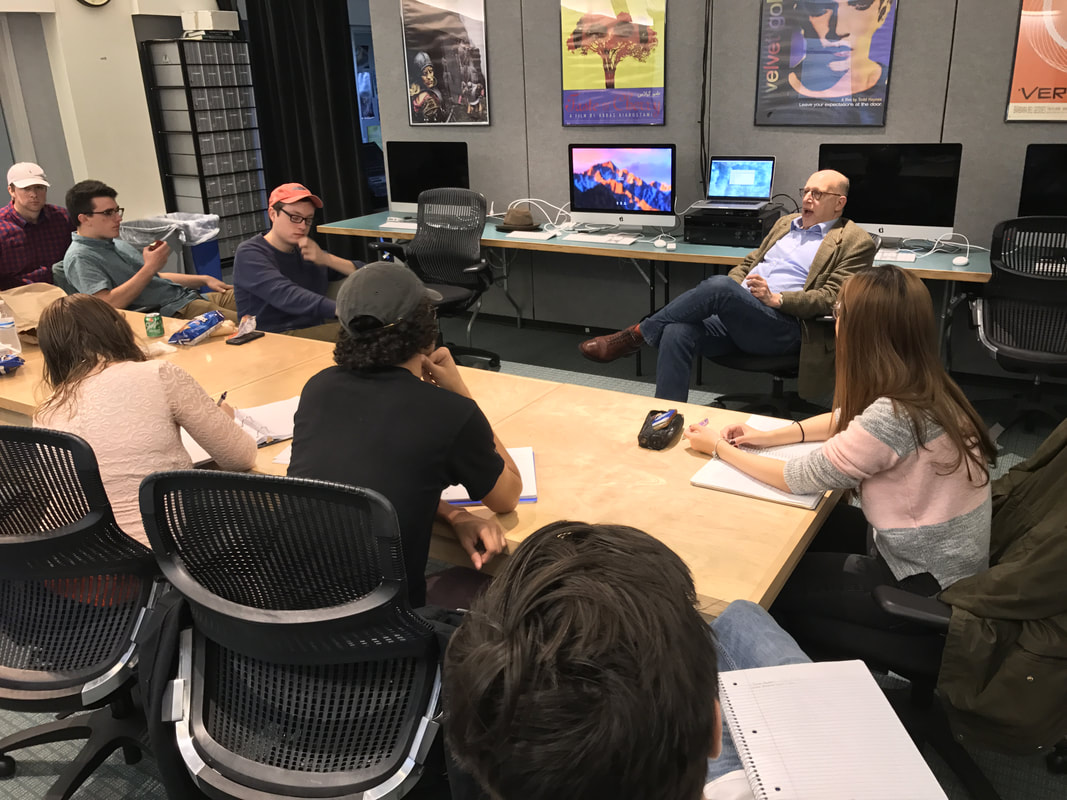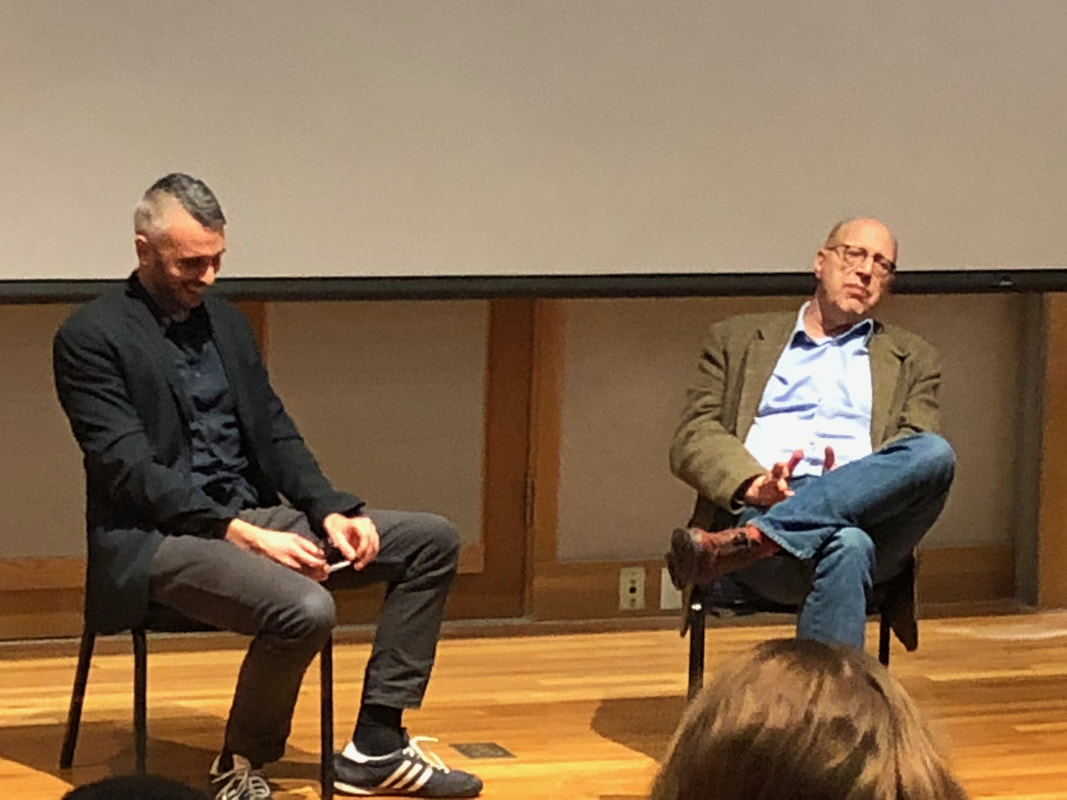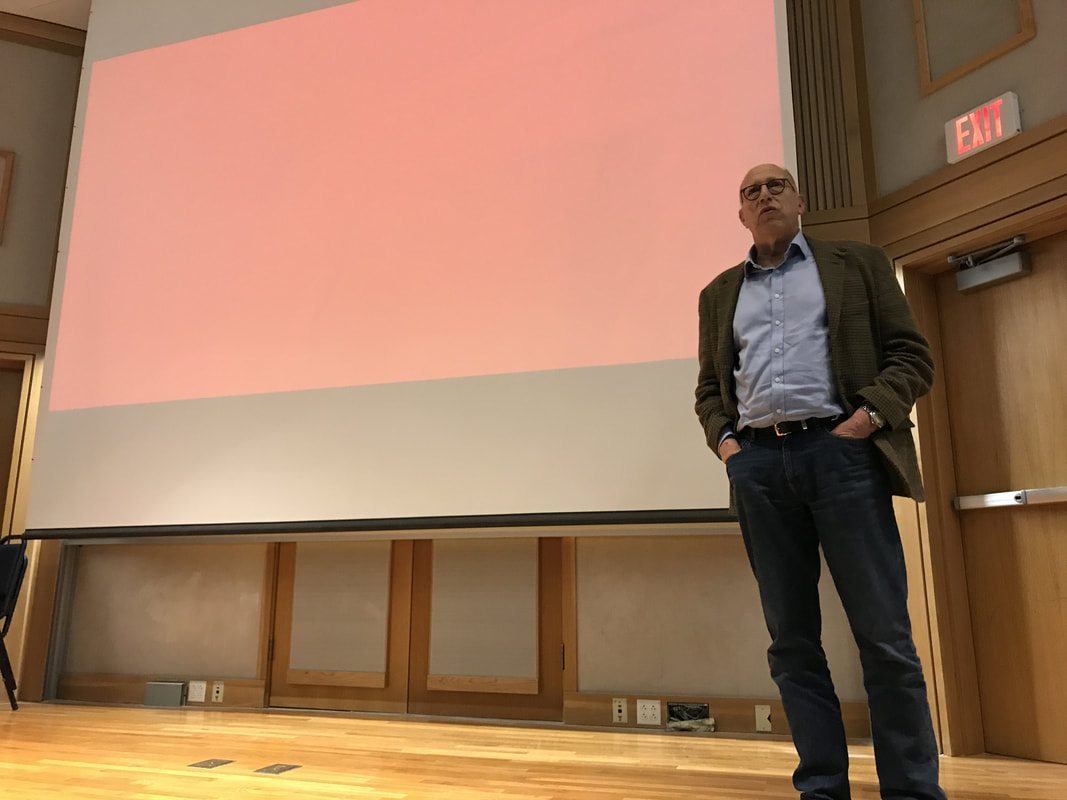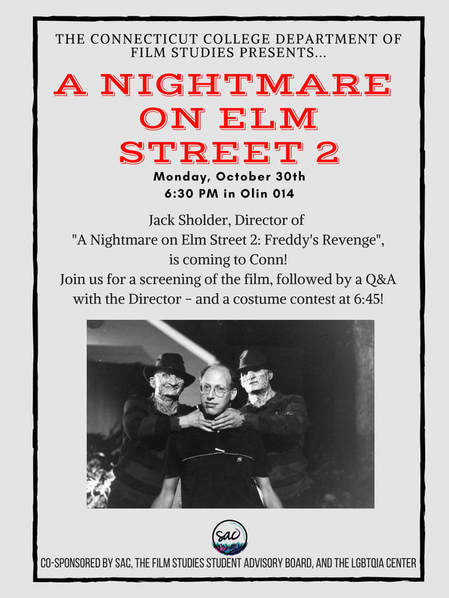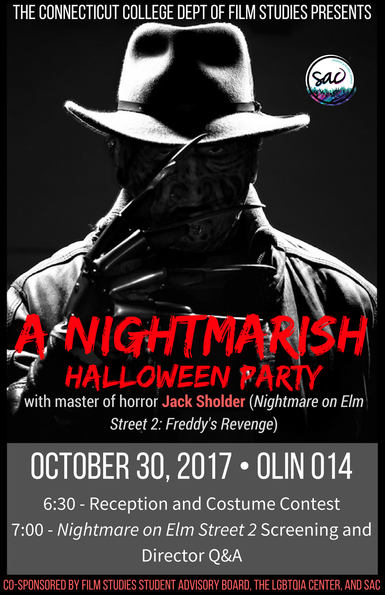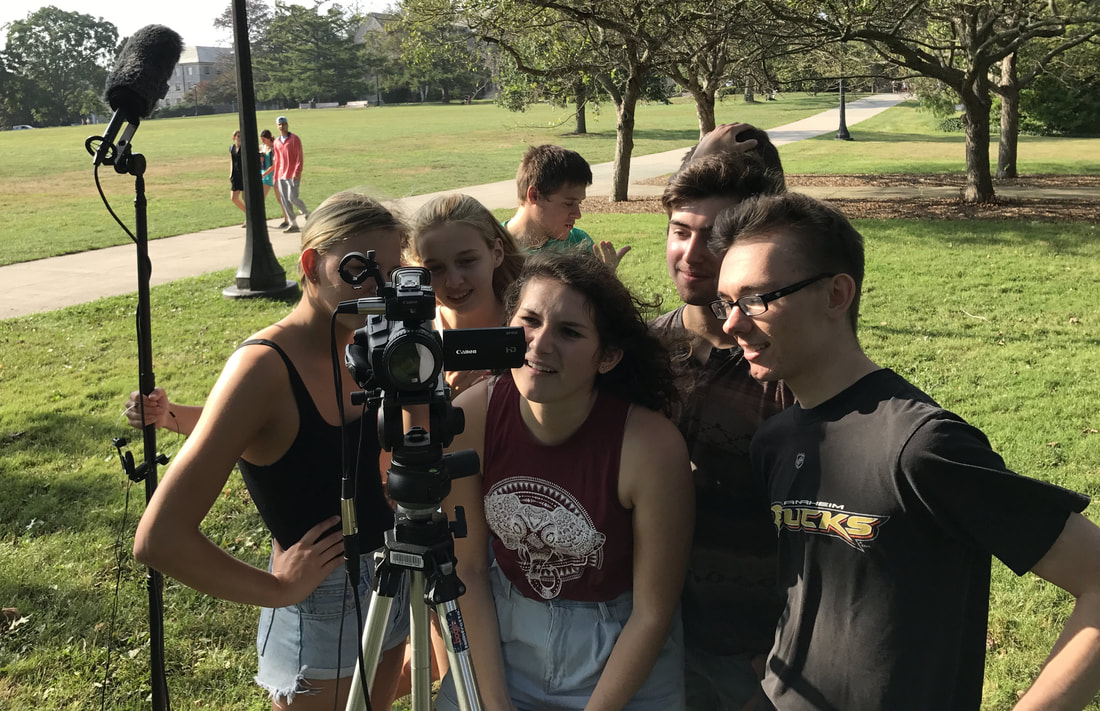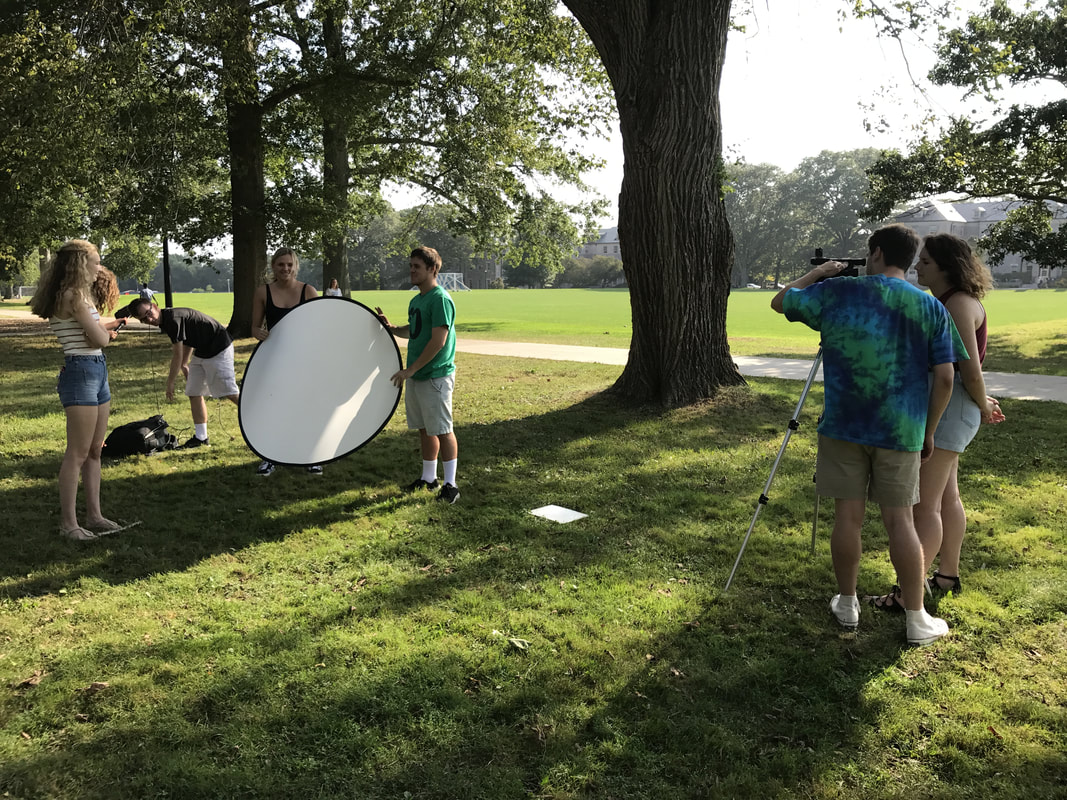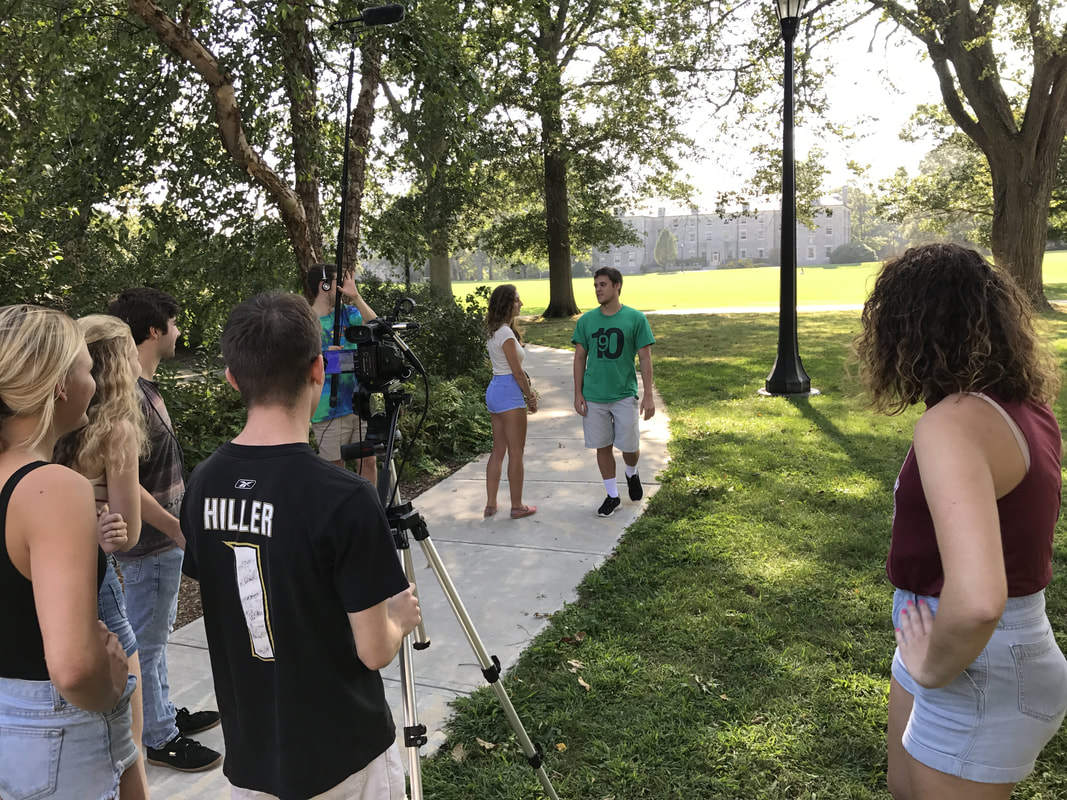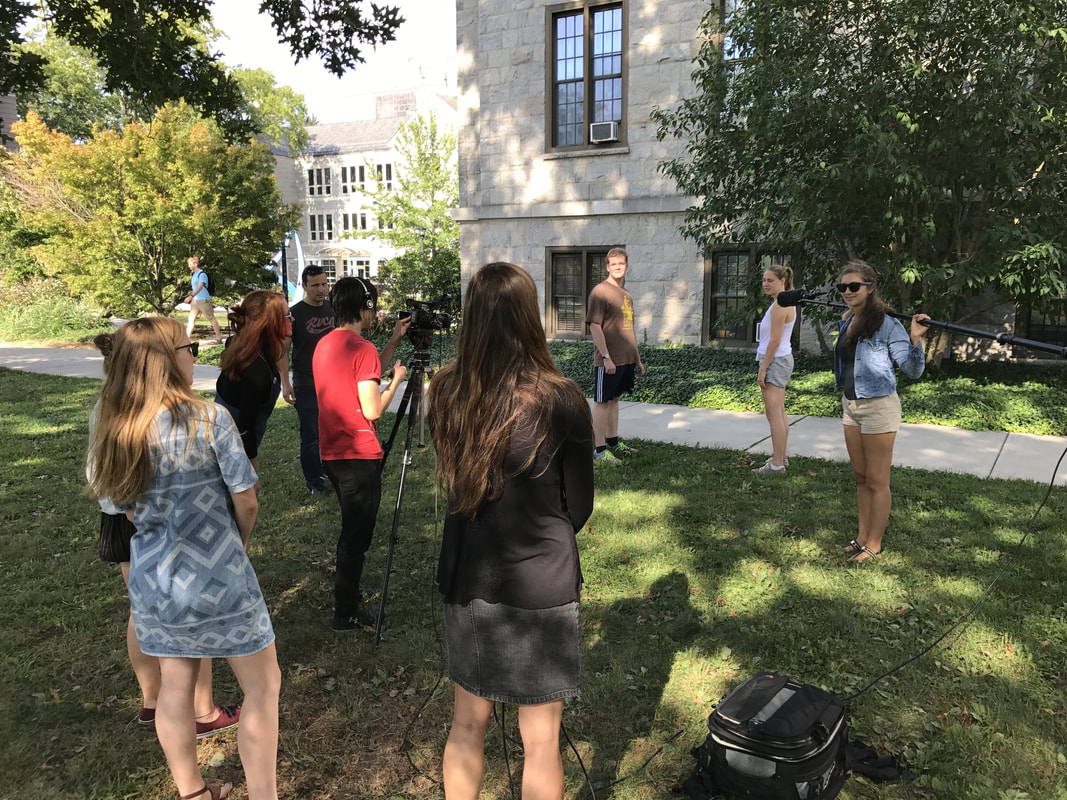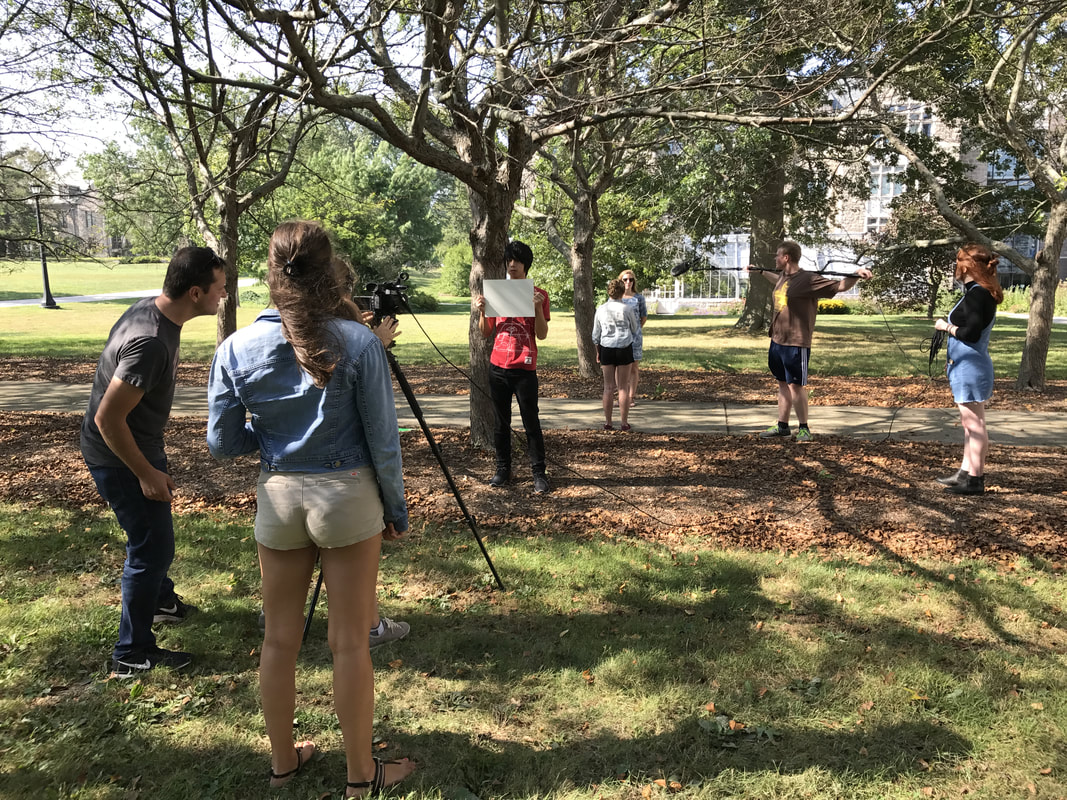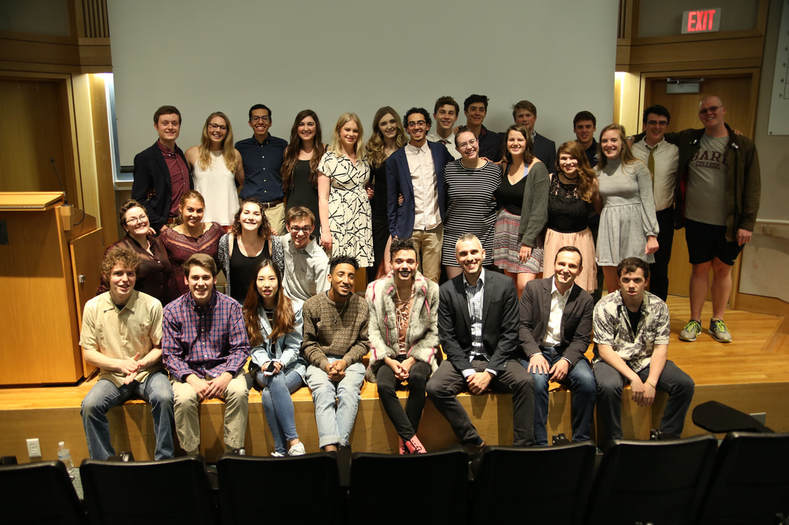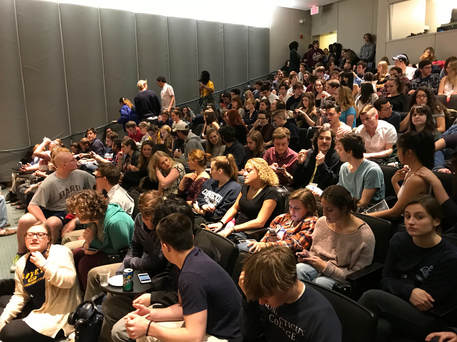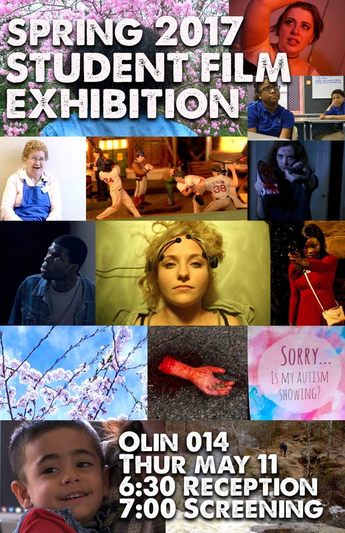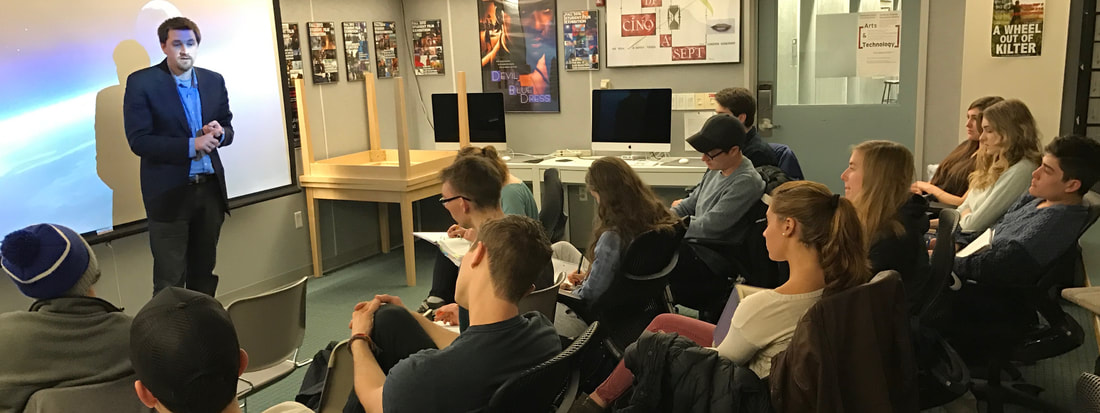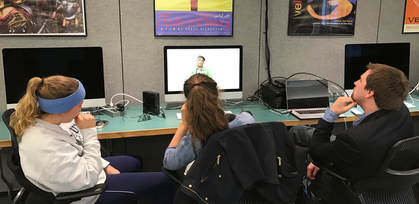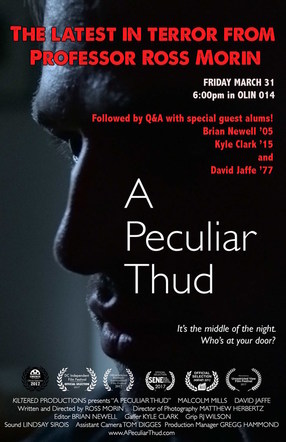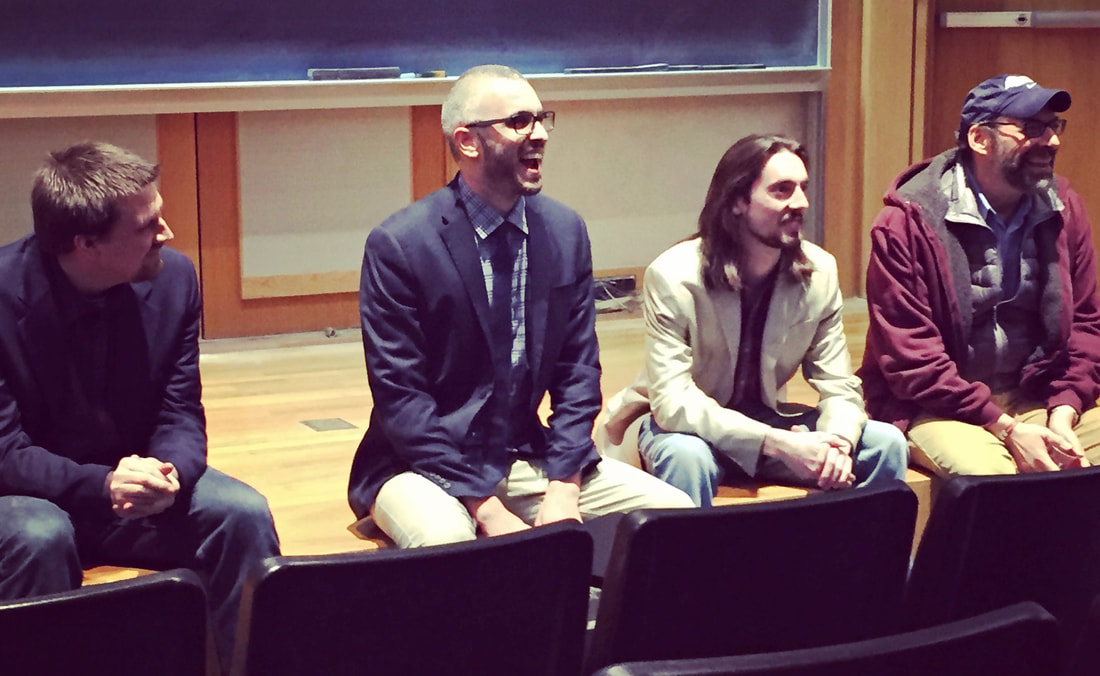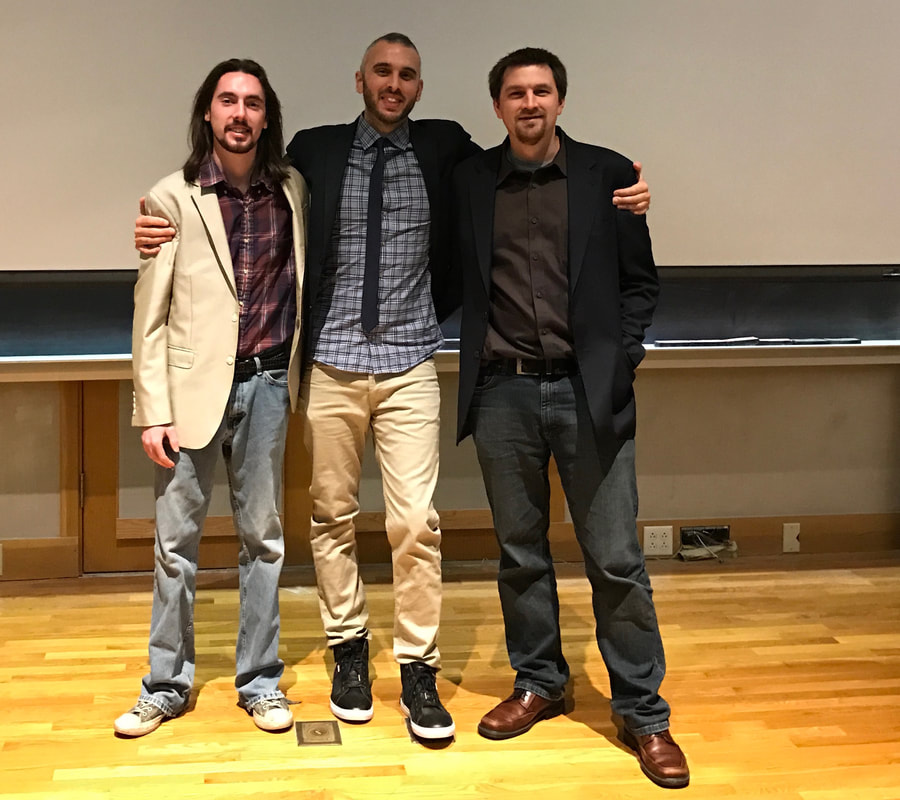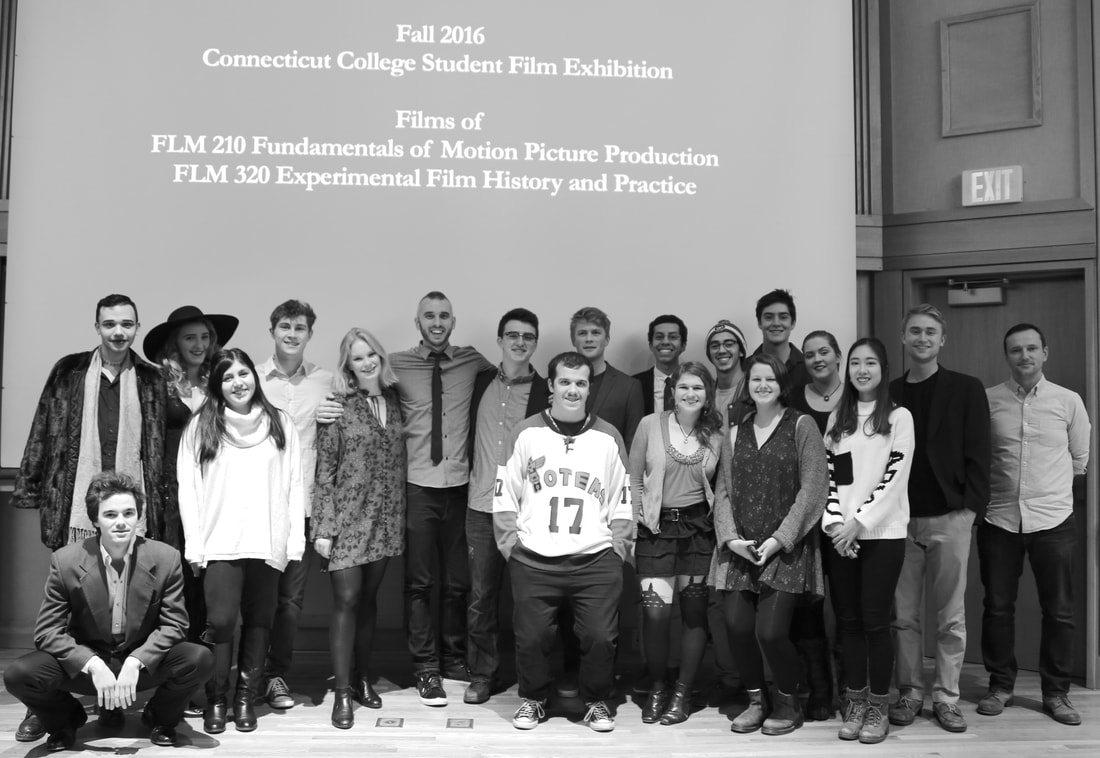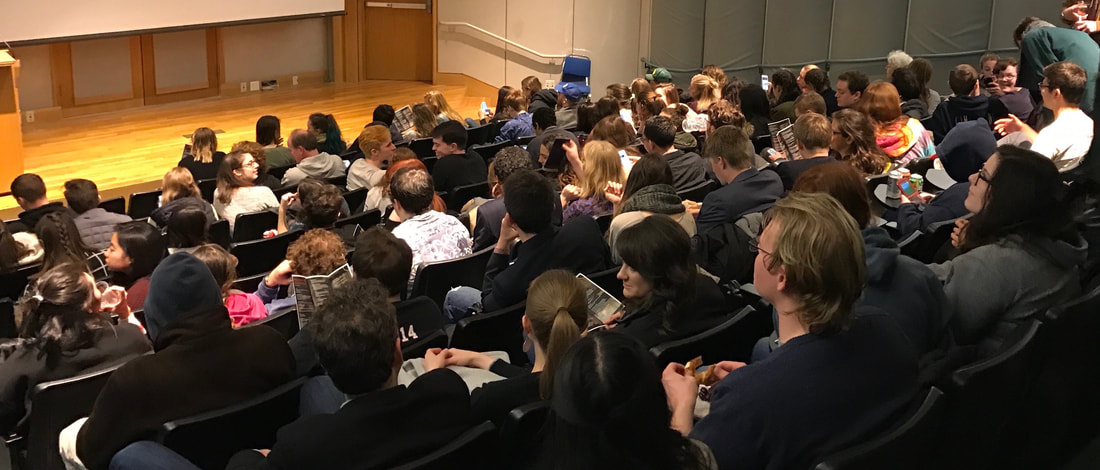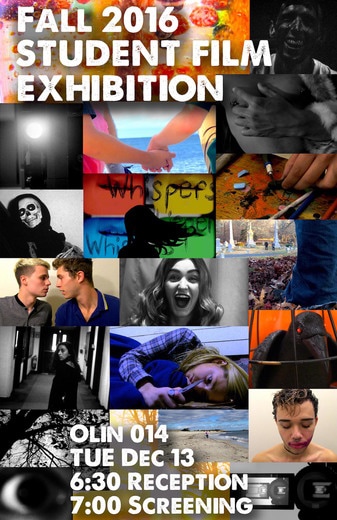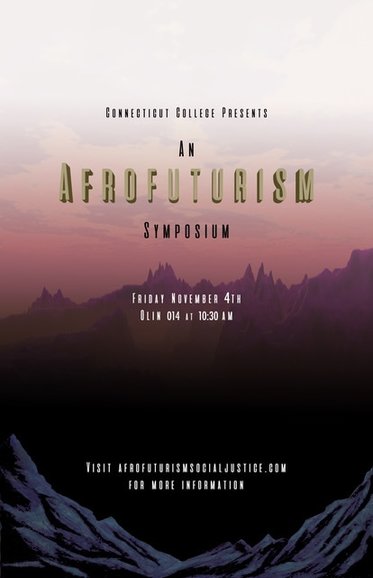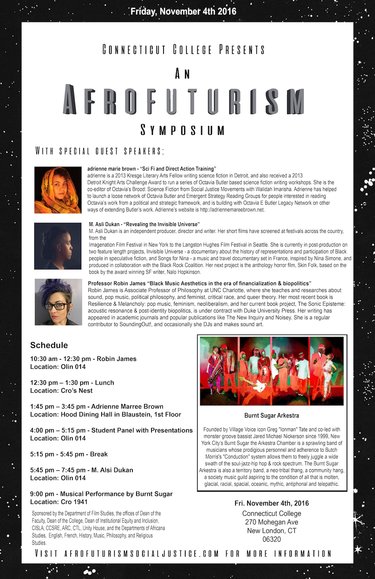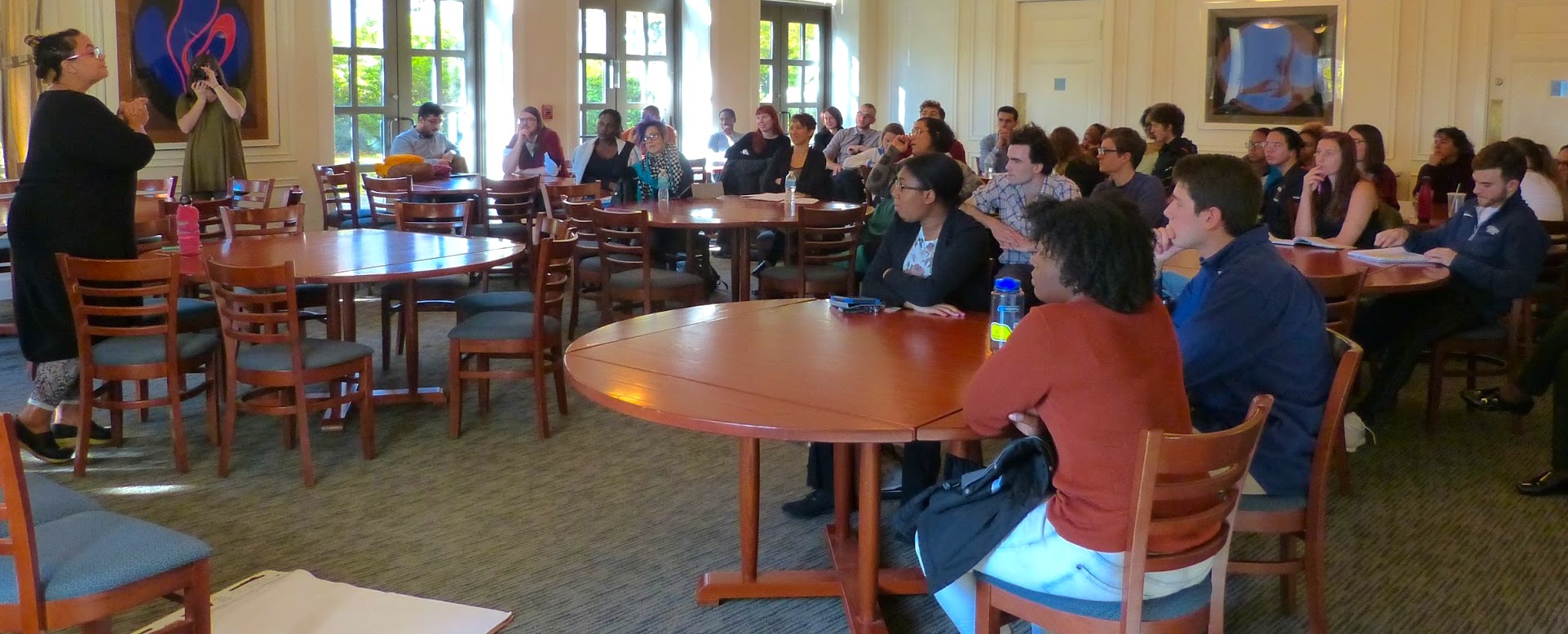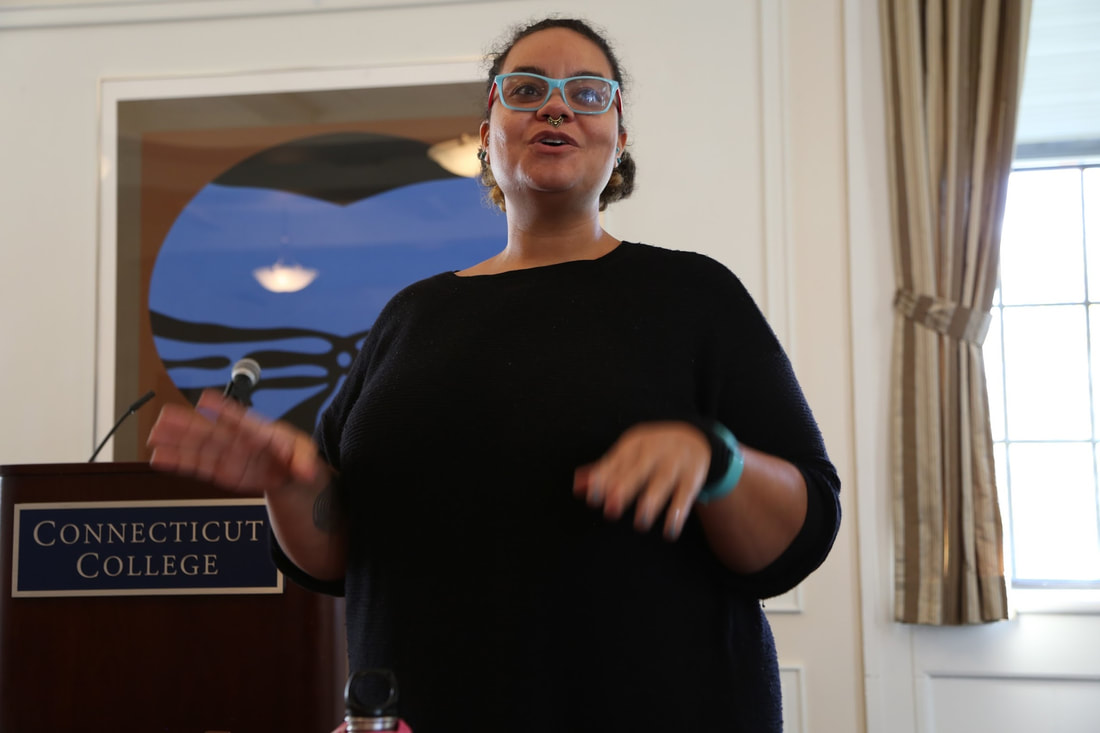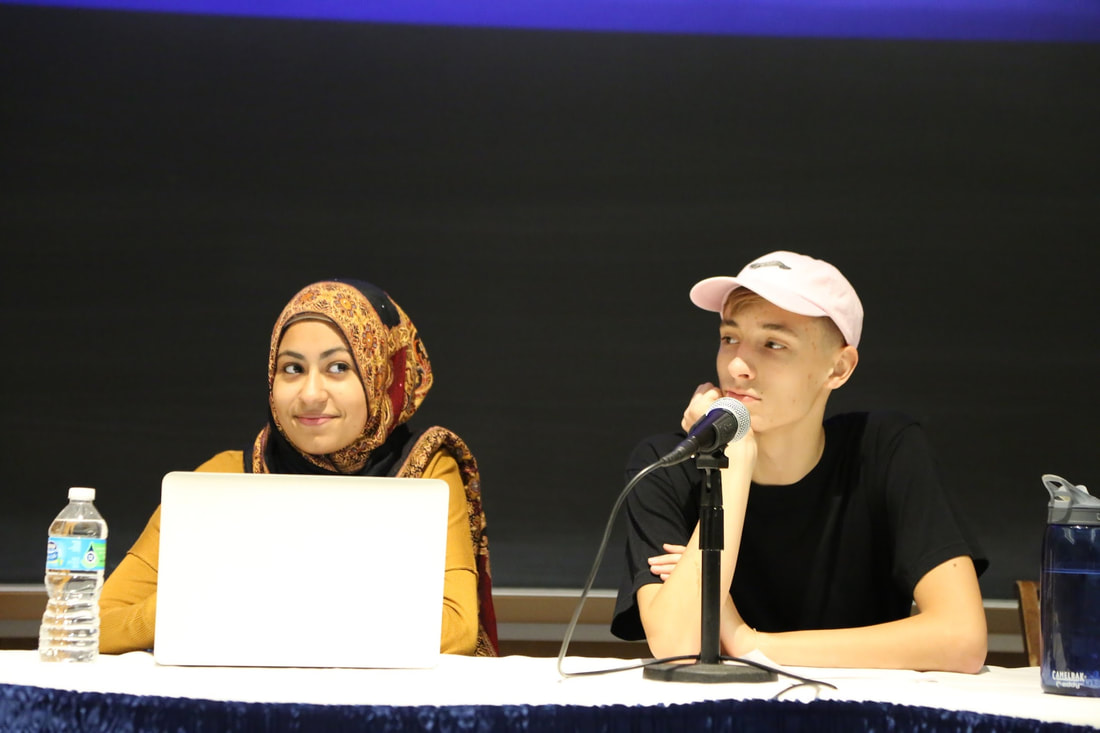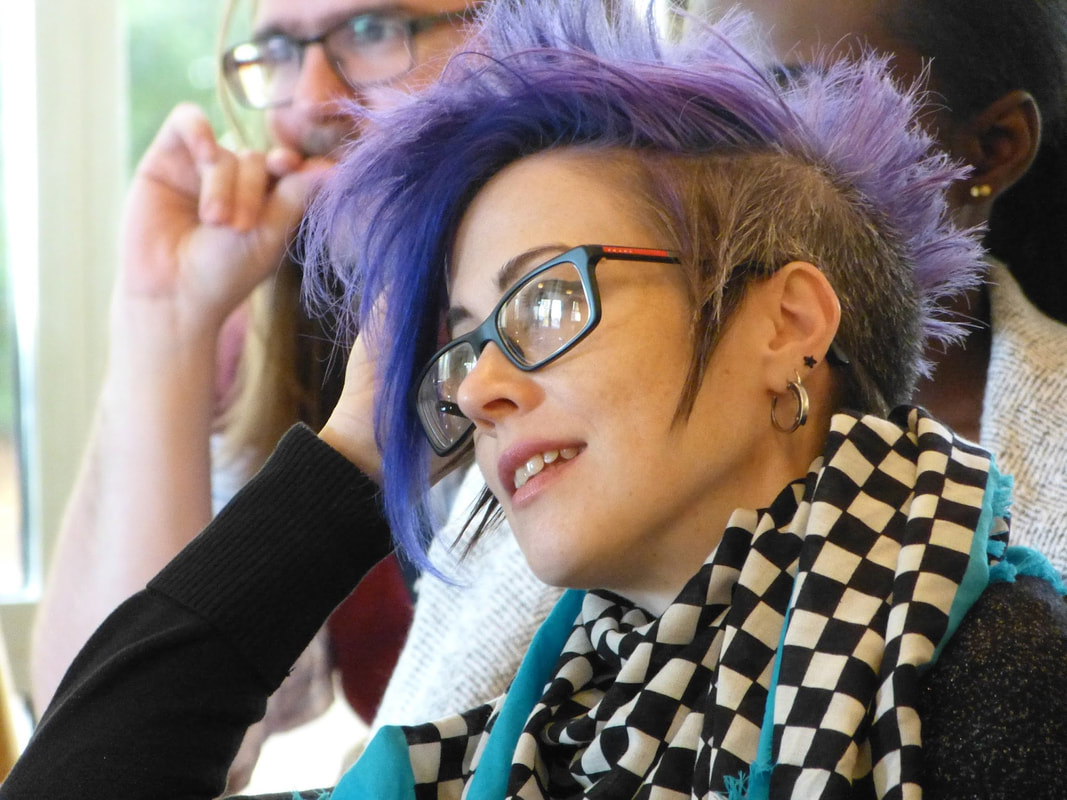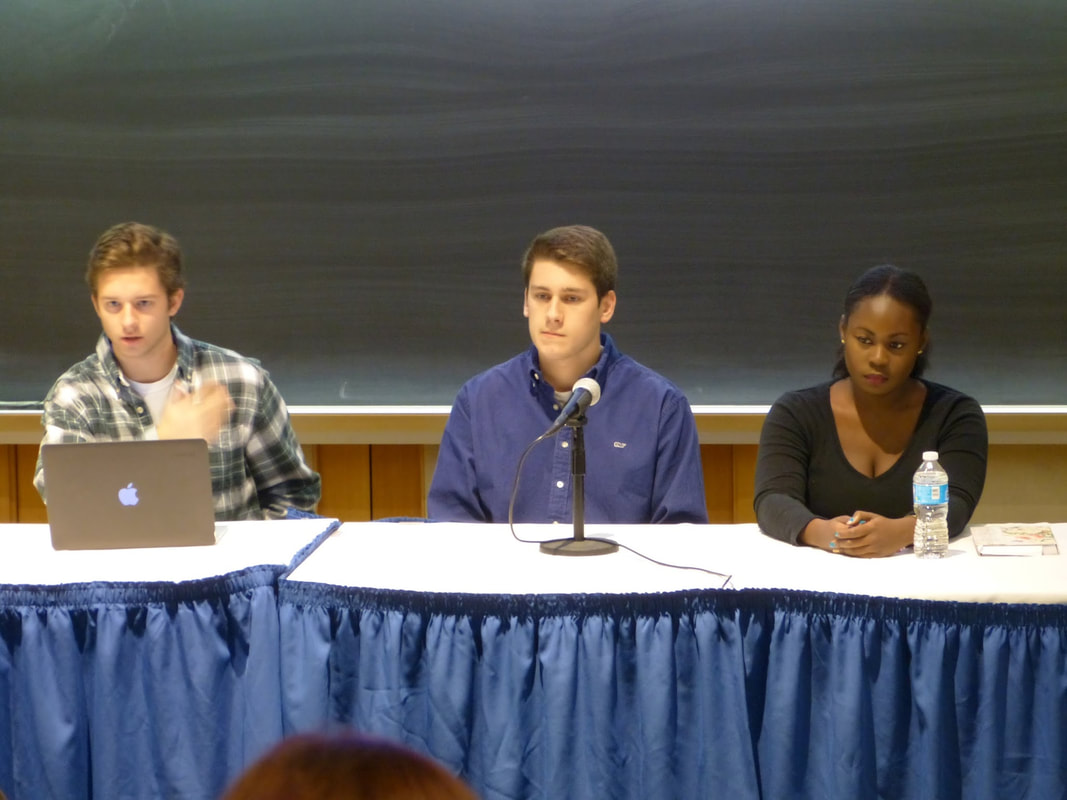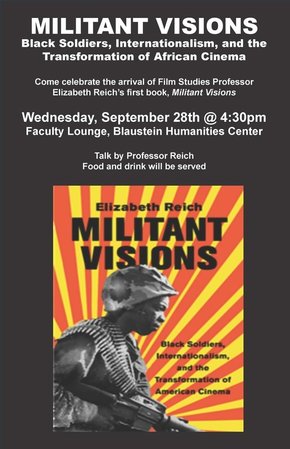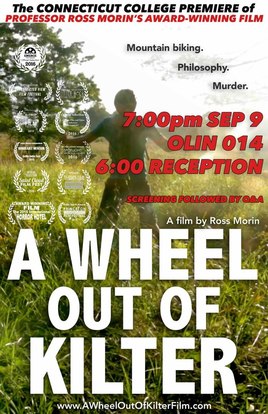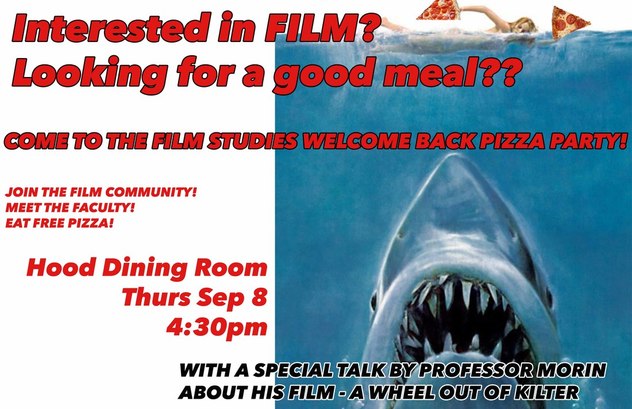We are proud to announce that Professor Morin’s IN A LANDSCAPE, DREAMING is an official selection of the 11th annual Tallahassee Film Festival occurring this weekend from April 5-7, 2019. Thanks so much to Chris and the team at Tallahassee! Not only that, but the film is also a Semi-Finalist at the 9th annual Utah Film Festival and Awards also happening April 4-6. Thanks so much to Dora and the team at Utah Film Festival!
In a Landscape, Dreaming was made with three Connecticut College Film Studies students - Charlie Losiewicz, Maggie Newell, and Christian Vazquez - at the Tippet Rise Art Center in Fishtail, Montana thanks to a grant from the Sidney E. Frank Foundation. Congrats to Professor Morin and his crew of amazing students! ABRIDGED OPENING REMARKS BY PROFESSOR ROSS MORIN, CHAIR OF CONNECTICUT COLLEGE DEPARTMENT OF FILM STUDIES
12/11/18 Good evening everyone and welcome to the Student Film Exhibition! [Thank yous] I like to remind audiences that they’ll see films by students who are holding cameras for the first times in their lives – or certainly their first times in College. You’re seeing the first baby steps taken by people who may go on to be the next Jane Campion or Kathryn Bigelow. Whether it’s a student’s first or their 13th film with me, I can promise you that each piece this semester was made with deep, deep thought. In FLM 210, students meet with me at least three times for feedback per film– and they make three films per semester. In FLM 320, they make FOUR films per semester. Each student pitches a proposal articulating a clear thesis or purpose, and that goes through drafts after meeting with me. Then each student writes a script, which also goes through several drafts (sometimes as many as six or seven, even in an intro class). Then there’s preproduction – location scouting, casting, blocking, shotlisting, scheduling every shot, minute-by-minute. Then there’s a day or two of shooting. Then there’s the editing phase, and that’s where the mosttime is spent, sculpting footage, cutting it down, re-writing through editing. Then there are re-writes, reshoots, and re-edits. The amount of time that goes into filmmaking – is overwhelming. I share this not to elicit sympathy or even respect for work ethic, but rather to try to illustrate the amount of thoughtfulness that goes into every step of making a film. And not just about logistics; about theme, about thesis, about politics, about representation, about ethics. The films may be short, but every second means something. At this point, I’d like to invite the chair of the Film Studies Student Advisory Board up to say a few words about community and collaboration. Charlie Losiewicz, class of 2019. ABRIDGED REMARKS BY CHARLIE LOSIEWICZ ‘19 The past 5 semesters I’ve taken 5 consecutive production courses, meaning that this is my 5th consecutive screening, and sadly my last. Reflecting on my journey with this department over the past few years, I want to take a moment to explain why it means so much to me, and perhaps why it means so much to so many others as well. My favorite memories of this department will always be of the film sets. I spent weekends last year on all my classmates sets, and in turn they helped out on mine. We relied on each other to fill in all the various crew positions, bounced ideas off each other, learned from each other, and eventually spent so much time together that we developed a pride and investment in each other’s projects. I remember shooting in windy 14 degree weather with Jonathan and Daryl wearing scarfs and ski masks, and realizing the only way to keep warm between shots was to huddle together like penguins. I remember wrapping The Babysitter shoot at 5am, where everyone started clapping, hugging and high fiving each other, because we had worked for nearly 12 hours straight that night. I remember taking a dinner break on top of the walls at Fort Adams, watching the Ocean and sharing a moment of appreciation with my friends. I remember looking to my crew of 8 people and telling them we were going to need to stay up way longer than anticipated. But nobody ever complained, because they cared about the success of my project as much as I did. In this department, each personal victory is a group victory. When you get the reshoot that shows more of your protagonist’s face, your classmates are thrilled. When something goes wrong on set, your classmates put their heads together and problem solve with you. I used to be stressed about a major that relied on collaboration, but when you are surrounded by hard working, intelligent, supportive, and talented classmates that are excited to lose sleep for you, the collaboration becomes your sense of comfort. I’m proud of how hard my friends work and how much fun we have together, but I also want to highlight the emotional strength that my classmates have. Everyone in this department is passionate about their work, which sometimes addresses difficult subjects and experiences. There’s a sense of safety in the lab when we screen our films for each other. Especially this semester, I’m constantly humbled and inspired by the vulnerability we can show each other. You’ll see plenty examples of this tonight, but know that behind these films of pain is a community of allies, friends, and mentors who grieve with you when it’s time to grieve, and lift you up when you need support. Our community is built off of the work done by Professor Morin, Dr. M, and Greg Surman. Whether you’re in a production class or strictly a theory class, Professor Morin and Dr. M always challenge you to do your best work. This means reshooting your film, revising the thesis of your paper, leading class discussions, and rationalizing every aesthetic choice with ethical implications. Professor Morin spent almost 12 hours straight in the lab on Sunday, giving us individual attention and workshopping our films with us. I just simply can’t think of another professor out there that would do that. That’s the kind of support I’m talking about. Thank you all for coming. Many of you support us well beyond this screening as actors, music scorers, or even just sources of emotional stability when we haven’t gotten any sleep. I hope we can repay you by making you proud and impressed with the films you’re about to see. To my classmates and professors, thank you for bringing me so much joy over the past few years. I’ll miss every moment in that lab upstairs, but I’m so proud of what we accomplished and how much fun we had along the way. Thank you all for being mentors, friends, roommates, travel buddies, allies, all nighter partners, artistic collaborators, moral compasses, and sometimes just someone to brighten my day. I’m very lucky I found you all. RETURN TO REMARKS BY PROFESSOR MORIN My students and I want to invite you into the world of Experimental Cinema, knowing that it will be challenging for those of you unfamiliar with it – most of you I’d bet. My students have had 16 weeks to adjust to the world; you’re just going to be thrown in tonight. So let me try to help you as best I can as quickly as I can. I define experimental film as “any moving image media that deviates radically in form from conventions of contemporary mainstream and mass-produced moving image media.” It’s not a genre, it’s not a particular style. It’s basically everything else you can do with film and video that’s not Hollywood, Documentary, or even art-house “European” cinema. So when we say something is “experimental,” it’s not anything in particular, it’s just an insufficient term that means anything radically outside the mainstream use of the form. Let me say this too. Experimental film is not meant to confuse you. Although it is different from what you’re likely used to, it’s not trying to cut you out of the experience; it’s not trying to exclude you. This isn’t to say that watching these films won’t be challenging, strange, or uncomfortable – it’s only to say that that isn’t really the point. Maya Deren, early experimental filmmaker, talks about how Experimental Film is about vertical exploration rather than horizontal. Horizontal structure of film is one that follows the X-axis of time, films about plot, story arc, moving forward. The Joker shows up, Batman tries to find him, they fight, and Batman catches the Joker. Linear, forward moving along the x-axis. Deren says experimental film doesn’t move forward in time, rather it stops to explore the essence of a particular moment. Experimental film isn’t as interested in the entire story of a person; it’s interested in a singular moment – a kiss, a stroll through a garden, a moment of panic. Much like some poetry is about an idea or a feeling rather than a story. Most of the experimental films have no story whatsoever. Some have no characters. Some are silent. Some have no recognizable objects at all. That doesn’t mean they are about nothing; it only means they are about something other than story, something ELSE. So when you watch these films, please try not to feel left out (although don’t worry if you don’t “get it”), because the films, and the students who made them, are trying to invite you in. Morgan’s film, the first film we’ll see tonight, is about the nuances of a particular feeling. The dance, the editing, and the music explore, ambivalently, various aspects of a personal experience. The thesis of the film is: my experience of X is like this. You don’t need to “get” a plot, or a character – you need only relate to and explore the nuanced emotions of the moment. The second film tonight, by Lucy, uses some visual metaphor to explore a thesis about an idea. You don’t need to “get” the metaphor exactly as Lucy intended in order for the film to resonate with you. I don’t want you to worry too much about intention. Chances are good that you’re not too far off with your read. I liken experimental film to playing on a playground. The films give you various ideas and feelings to explore, like features on a playground. But they are not entirely open ended so that you can do anything – there’s a slide, a sandbox, and a swingset. There isn’t a mini golf course. Lucy’s film is about boots and hands – it’s not about turtles. At a screening of my latest experimental film, a student wisely asked, “is it possible to mess up an experimental film?” Absolutely. Experimental films are not random, stream-of- consciousness and sloppy mistakes. No. Every moment is shot and edited to convey something to the audience in a particular way. To create a playground of ideas and emotions for you to explore. And they let you do the exploring, often. So I encourage you to lean into the ambivalence and the openness, to play in each of the films, and to discuss the work later with your friends and especially the filmmakers. I need to say one more thing. A personal note about tonight. On September 27, 2018, Dr. Christine Blasey Ford testified about a sexual assault she endured as a teenager. When she spoke, two things happened to me. The first is that it unleashed all of my deepest fears for survivors in Trump’s America. Fears there would be doubt when a survivor spoke. That there would be discrediting of character. That there would be blaming. That there would be silencing. That there would be hatred for speaking. Indeed, these things did happen to Blasey Ford. Like many of us in this room, I felt consumed by her testimony. I could not stop listening. I needed to know if she could be heard, taken seriously, validated, after all these years. Validation is one of the most important things to a survivor. She called it an act of civic duty; to many of us, it was an act of heroism. And then I saw what the men in the room and men around the world did to her. And what women did to her too. And I wept for her. And I wept for all survivors. Many of us wept. The impacts of the Blasey Ford hearing crossed into my classroom in various ways. Our already socially-conscious community exploded with scripts and proposals for films about abuse, assault, survival, sadness, isolation, pain, suffering, loss; most of them centered around young women. An outpouring of pain and fear flooded my table film after film. Aching hearts. Fearful hearts. My students. My community. My people. Such pain. But there was something else that happened when Blasey Ford spoke. While she was spoken over and shut out by countless people, she was heard by far, far more. Her bravery and her fight wasn’t a failure; it was an inspiration. My students weren’t just responding to the way she was treated – they were also responding to the way she fought. They were responding to her resilience. And in this community, in my classroom, they wanted to fight too. When one student made a film about their pain and fear, others, eyes filled with tears, told them they were brave and that they had their back. And then another film – and more support. Encouragement. And the films and the scripts kept coming. With them, more support and love from their classmates and friends. They were forming a community, a team. United around the idea of resilience, of fighting. Fighting for life. For justice. For each other. They call themselves their “film fam.” Indeed. My students wanted me to stand up here and apologize for the heaviness of the exhibition that is about to follow. Perhaps in the middle of it, it all felt so heavy to them. But looking at the exhibition as a whole, in this order, I see a story about strength, community and love. We teachers are not unaffected by what happens in the classroom. The strength you have given to each other, you have also given to me. And I hope to all those who have come out tonight as well. I’d like to dedicate this exhibition to survivors everywhere, their resilience and their fight. Thanks, my dear students, for being here. And thanks for being here in my heart.
Our beloved department chair Professor Ross Morin has recently been awarded with the John S. King Memorial teaching award, which is the highest honor in teaching excellence a professor can receive at the college. We are so proud and thankful for Professor Morin. His never-ending selfless contributions to our department are the reason we have seen so much success recently. To us he is a mentor, fellow filmmaker, professor, and friend. Congratulations Professor Morin. On behalf of the entire department, we are so grateful. You can read the full article here. https://www.conncoll.edu/…/news-archive/2018/faculty-awards/
The Department of Film Studies proudly invites you to the Fall 2017 Student Film Exhibition. Come out Tuesday, December 12 to see the powerful, entertaining and thought-provoking cinematic work of students across our campus. At 7:00pm in Olin 014 we will screen the best fiction and experimental films made this semester. As always - there will be a reception at 6:30 just outside the auditorium. The event is free and open to the public and we strongly recommend you arrive early to get a seat as the event has been standing room only for the past two years.
Jack Sholder (A Nightmare on Elm Street Part 2, Alone in the Dark, The Hidden) made an epic visit to Connecticut College where he gave a masterful master class in shooting master scene. He spent hours meeting individually with students to discuss their work and their future in the film industry. And the main event - a q&a and discussion of the awesomely queer subtext of A Nightmare on Elm Street Part 2, the "gayest horror film ever made"!
It's back!!!!! The Department of Film Studies proudly presents the ever-anticipated Halloween party. On Monday, October 30th at 6:30pm, Olin 014 will transform into a spirited spooky halloween celebration! The party of the semester will kickoff with a costume contest, then move into a screening of the cult classic "A Nightmare On Elm Street 2: Freddie's Revenge." The screening will be followed by a quesiton & answer session with special guest Jack Sholder, the director of the film! Jack Sholder is an award winning, internationally recognized filmmaker, known for his works such as "A Nightmare on Elm Street 2: Freddie's Revenge" (1985), "The Hidden" (1987), "Wishmaster 2: Evil Never Dies" (1999), and "Alone in the Dark" (1982) among many others. In addition, Jack has directed episodes of "Vietnam War Stories," "Tales From The Crypt," "Gabriel's Fire," "Pensacola," and "Tremors," as well as the pilot for Richard Donner’s "The Omen" for NBC.
In 2004, Jack founded the Film & Television Production program at Western Carolina University where he was Professor in the School of Stage & Screen and director of the FTP program until 2017. He currently lives in Asheville, NC. Bring your friends, bring your enemies, bring your scariest costumes, bring your appetite. You don't want to miss this terrifying event. It's going to be a graveyard smash! And filmmaking is up and running at Connecticut College! Professor Morin's students in FLM 210, Fundamentals of Motion Picture Production are taking out the cameras for the first time in their college careers. You can feel the excitement as they take their first steps! We can't wait to see the amazing work will they produce during their years here!
Today Brian Newell (www.bnedits.com) visited the Department of Film Studies to talk about working as an editor in the documentary television industry. After his lecture and discussion he spent the afternoon meeting with students to workshop their films and discuss the importance of editing in storytelling.
|
